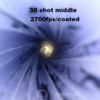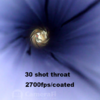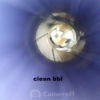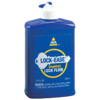Nature Boy
Member
- Joined
- Apr 21, 2015
- Messages
- 8,247
Also, I will say again, those VFG pellets , Kroil , and JB Bore Polish work great
I’m going to order some of those
Also, I will say again, those VFG pellets , Kroil , and JB Bore Polish work great
What caliber ? and what ammo / reloading powder ?
Also, I will say again, those VFG pellets , Kroil , and JB Bore Polish work great ( earlier post in this thread ) Being able to adjust the "fit" of the pellets helps dramatically.
I bet there’s a color adjustment on the camera program.
What caliber are you shooting in that RPR?
ps. That is a carbon ring in your first pic. You may also want to put a fired case in there, come in from the muzzle end and see where the mouth falls
What caliber ? and what ammo / reloading powder ?
Also, I will say again, those VFG pellets , Kroil , and JB Bore Polish work great ( earlier post in this thread ) Being able to adjust the "fit" of the pellets helps dramatically.








When a barrel gets in that shape it is hard to keep it shooting as it is harder and harder to get the cracked up area clean.


His was a very different philosophy based on the idea that a tactical rifle was going to be shot regularly if not daily; not hunted with and then put away until the next season.
Gtscotty said:I couldn't find any of the pellets locally
I suspect it is very close to wipe out, in a non foaming mix, but I can't prove that of course.
When a barrel gets in that shape it is hard to keep it shooting as it is harder and harder to get the cracked up area clean.
Know lots of hunters don't clean their hunting rifles for entire season (2 months in fairly humid climate).......
........
https://www.brownells.com/ is a great source for all cleaning needs so keeping a want list running and taking advantage of their free shipping when offered works well.
Regards,
hps
After reading all of this and looking at the bore appearances from the perspective of my experience as a Tool and Die Maker I am left to wonder if the copper does not reduce friction given the surface appearance of a lot of the pictures. With hardened tool steel the appearance would be considered heat checking and whomever did the finish grinding would get their butt chewed.However, if the rifling is created with a broach I would gues that the cutter surface was not real sharp.

No mysterious pressure, no ejector marks, no heavy bolt lift, the deep clean seems to have cured my carbon problem.






I tried Moly but results were inconclusive. Also it can be corrosive. Graphite might be better. Let us know.
How many times have you used a borescope afterwards, to evaluate how well this works?Hoppes #9 or any similar bore cleaner, bronze brushes, and light oil has all that I have ever used.
